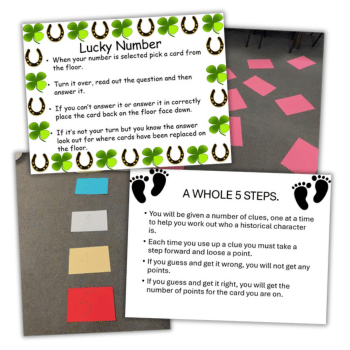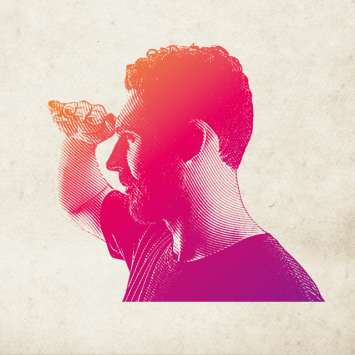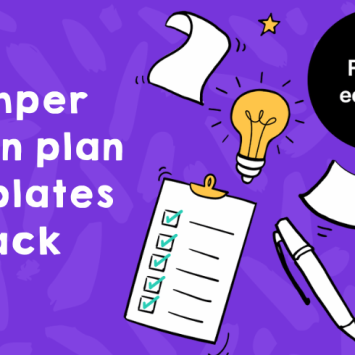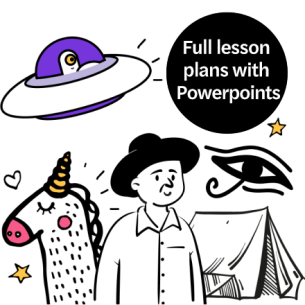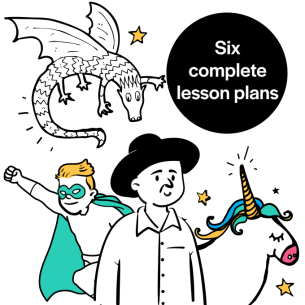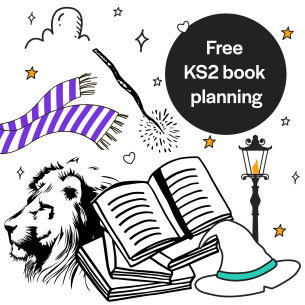Head of history, Deborah Hayden, shares three history games that she’s used successfully with both KS3 and KS4 history classes…
When minds start to wander during those low energy afternoon lessons, a well-chosen game can get students’ synapses firing while providing some useful retrieval practice. Download the attached PowerPoint for example instructions and photos of the games in action.
History games to try
A Whole 5 Steps
This is a team game for helping to assess students’ knowledge confidence. Students must identify a character, object, place or event from five clues that are gradually revealed to them one at a time.
Place five cards, each numbered 1 to 5, in the middle of your classroom floor as ‘stepping stones’. Each team then nominates one of their members to act as their ‘playing piece’. They stand on card number 5.
The team proceed to receive one clue at a time in the form of PowerPoint slides, so that the whole class can see. If they correctly guess the answer from just this first clue, the team receives 5 points.
If they need a further clue, the ‘playing piece’ steps forward to card number 4 and so on. Each clue they use loses the team a potential point.
If they still guess incorrectly after receiving all 5 clues, then they’re out of the game and receive no points at all. Make sure you have enough rounds for all the teams.
Lucky Number
This is a memory-based Q&A activity that also involves movement. It’s helpful to have a random number generator to hand for this. The old-fashioned ‘pulling numbered lollipop sticks’ could also work.
During the very first lesson in September, I give all of my students a number based on their place in the register. They write this on the front of their exercise books. We’ll use those numbers for various games over the course of year, so this helps save time.
For the ‘Lucky Number’ game, you’ll need to write/print questions related to the learning in this or last lesson on pieces of A4 card.
Spread the question cards out, face down in the middle of your classroom floor. Then use your random number generator to select a student. They will proceed to pick up a card from the floor, read out the question written on it, and then hopefully follow that with the correct answer.
If they’re unable to answer it, or if both you and the class agree that their answer was incorrect, they place the card back on the floor face down.
If another student knows the answer, they’ll have to remember where the card is when their number is selected. This helps to keep all students engaged, even when it’s not their turn.
Once a question card has been answered correctly, remove it from the game. This activity can be an effective way of checking for understanding and misconceptions. It also helps to identify any material that may perhaps need to be retaught.
SLT Says
This final history game always creates great excitement among KS3 students (and sometimes even KS4 students claiming to be too old for it).
It’s a version of ‘Simon Says’, rebadged as whatever the name of your headteacher or other member of SLT says.
Place a picture of the senior colleague in question on a PowerPoint slide, alongside a superimposed speech bubble containing an instruction. You’ll need to create several of these with different instructions for each round.
Play then proceeds as follows: “Ms/Mr [name] says… ‘Put your hands on your head if you can tell me when the Battle of Hastings took place.’”
As the teacher, you can now confidently ask any student with their hands placed on their head to tell you the answer.
This is another useful strategy to check for understanding, but students need to feel confident to not put their hands on their head and admit they ‘can’t tell you.’
You can come up with your own imaginative instructions for successive rounds. I always like to end with “Laugh out loud if you can tell me…” – which is particularly good if the head or a member of SLT happen to be walking by with a prospective new parent, and witness you and the class all laughing together…
More history game ideas
Beyond these, there are many other history games you could include in lessons to help develop students’ literacy and retrieval skills.
Examples can range from reliable favourites, like Scrabble, Bingo, Scattergories and Dominos, through to Word Clouds and learning apps that combine key vocabulary with images.
Image-based history games
Image-based history games are great for ensuring accessibility. These can include quick ‘Odd One Out’ activities, or filling a slide with images that relate to previous learning, before secretly removing them one at a time. Task students with spotting which are missing and explaining how the image links back to something they’ve covered in a previous lesson.
Annotate emojis
Love them or hate them, emojis are now a staple part of how students communicate with each other, so using them in a lesson activity can be an easy win.
Provide students with printouts showing a variety of emojis that they must annotate and link back to an aspect of their learning.
I’m frequently amazed at how often they’re able to make relevant links I’d never have thought of myself.
Multiple-choice quiz
Multiple choice questions continue to be a reliable activity when it comes to retrieval practice, so try getting students to devise multiple-choice quizzes of their own.
One approach you could try involves students attempting to ‘outfox’ each other. Have the students form pairs, and give each pair a different question related to their learning.
Each pair must then come up with four plausible answers to their question, only one of which is correct. If they can outfox the rest of the class with their convincing false options, they get a point.
If their opponents get the question right, they get the point – another potentially useful strategy for identifying misconceptions.
More tips for playing history games
My advice for anyone wanting to incorporate history games into their lessons is always ensure that they’re based on retrieval of prior learning. This will help to both identify misconceptions and inform your future planning.
Be sure to keep things simple, and stick to games with streamlined rules that don’t require lots of resources and extra equipment.
Don’t be afraid to play the same history games with both KS3 and KS4 learners, as students’ familiarity with the games’ rules and how they work can save valuable time later on.
Moreover, you’ll soon identify those firm favourites that can be used as ‘carrots’ to win over more challenging classes.
Remember – learning should always be meaningful, but that’s not to say that it can’t also be fun…
- Utilise different game types that variously focus on movement, literacy and oracy skills, and the students’ ability to identify visual clues
- To keep things organised, I’d recommend using PowerPoint templates to assemble your game displays and questions
- Designate a ‘Game of the week’, whereby all of your classes across different year groups will play the same game. This will let you make any necessary tweaks for subsequent classes
- Study TV game shows for possible ideas – Richard Osman’s House of Games can be a great source of inspiration
Deborah Hayden is a head of history.
